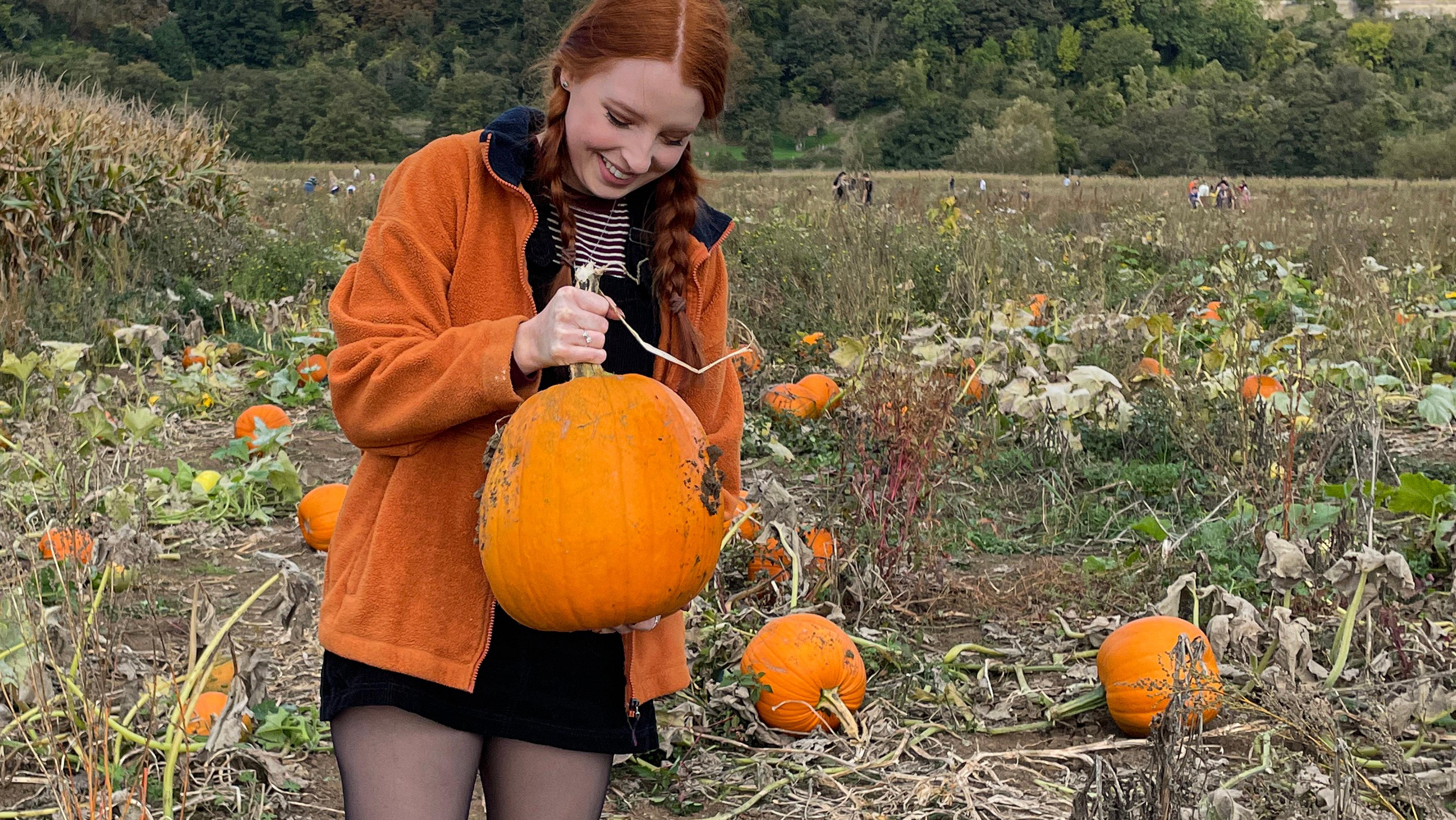Why Do We Obsess Over Pumpkins Every Fall?
Pumpkins and fall go together like peanut butter and jelly, but let’s find out why.
Although we're past Halloween, our respect for the great pumpkin forges on. Jack-o'-lanterns, pumpkin pie, pumpkin spice, and everything nice. An easy explanation for this pumpkin fever would just be that they're what's in season around this time of year, but I refuse to believe any food history is that simple.
What's so special about pumpkins, anyway? I mean, gourds are just as cute as pumpkins. And since when was it okay for one plant to completely take over fall? That is not what the fall season is about. We should totally just smash all the pumpkins!
Whoa, apologies. I don't know what came over me. Don't get me wrong, pumpkin pie is my absolute favorite, but what makes this orange pie-filler the ruler of the fall season?
Pumpkins vs. gourds: What’s the difference?
First, I think we have to look at what sets pumpkins apart. Although they're part of the same family, a pumpkin and a gourd are different. Pumpkin is actually more like a type of squash (think butternut squash or acorn squash) because you can scoop out the insides and eat them, or at least use them to make something edible.
Gourds, on the other hand, have hard exteriors and don't have the guts to be edible. Gourds are mainly just grown for decoration. This isn't to say gourds are totally inedible; technically you could eat them. The issue is whether or not you would even want to try. The best time to eat one is when they're at their youngest. Younger gourds are softer and easier to cut open, Thrillist explains. Looking at the bumpy, oddly shaped varieties of gourd out there, all I see is a table centerpiece and nothing I'd like to take a bite out of. But you might be different.
Pumpkin seeds need to be planted between the last week of May and the middle of June because they take between 90 and 120 days to grow. This mostly has to do with the region where pumpkins became popular (more on that later). To ensure the best pumpkins, Good Housekeeping recommends aiming to harvest before the first signs of winter frost hit. This is why they are harvested around October (prime spooky season).
Our favorite little orange squash babies are also big business for Illinois, specifically. As of 2020, Illinois expanded its pumpkin acreage to 15,900, according to USDA data. The state harvests more than twice as many pumpkin acres as any of the other top pumpkin producing states in the country.
A brief pumpkin history
The pumpkin, and squashes in general, are native to North America. So, it makes sense that Native Americans had been cultivating them for thousands of years before our notion of "The First Thanksgiving" (commercially pushed and historically inaccurate) ever came into play.
Native Americans actually cultivated pumpkins before beans or corn even came along. Different Native groups found every possible use for pumpkins; some boiled them, some roasted, cut them, ground them into powder, or hollowed them out and used them as containers.
What we can partially give the colonizers credit for is the name. In 1584, a French explorer named Jacques Cartier was making his way through North America and wrote about seeing "gros melons." Translated to English the term became "pompions," and then somewhere down the line language evolved as it normally does and we ended up with "pumpkin."
Why we celebrate fall with pumpkins
The transition from colonization to industrialization is when pumpkins cemented themselves as the fall icon. When people started moving from rural to urban living, squashes such as zucchini made their way over to the cities as well, but pumpkins stayed on the farm. Farmers used pumpkins to feed livestock, and because pumpkins stayed behind they became associated with the rural lifestyle. So, when us city folk were feeling blue about all the hustle and bustle of urban life, pumpkins would remind us of a sweeter time when we'd farm and harvest, explains Smithsonian Magazine.
This sense of nostalgia for farming steadily grew and eventually made its way into cookbooks, where the first recipe for pumpkin pie was published in the 1796 cookbook American Cookery. Because the cookbook was published and sold mainly in the New England region, pumpkin pie became associated with the North. This led to abolitionist women taking it on as a symbol representative of the strength of farmers and northern ideals.
"The women who [helped create] Thanksgiving as a holiday were strong abolitionists, so they associated pumpkin farms with northern virtue and very consciously compared it to Southern immoral plantation life," says Cindy Ott, author of Pumpkin: The Curious History of an American Icon.
Here we are today, still celebrating this powerful emblem, sipping our pumpkin spice lattes (which do not even contain pumpkin) and snapping our pictures in patches. We decorate our homes with pumpkins and we design menus around them; there's no escaping the hold the great pumpkin has on us throughout autumn.
Pumpkin: a symbol of spooky times, family gathering, fall vibes, and freedom.
